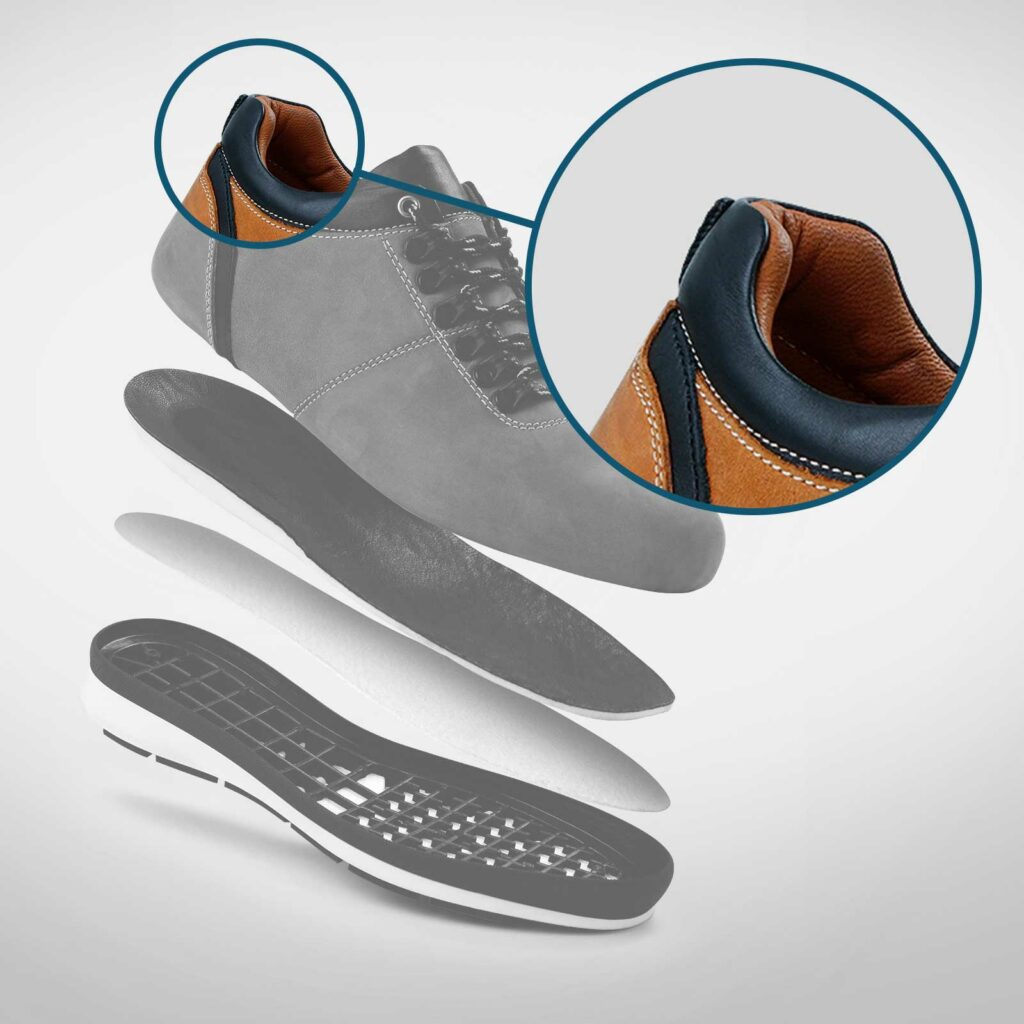In recent years, the importance and recognition of shoes by people has rapidly grown. The unstoppable success of the footwear market is driven by various factors, including, in particular, the increasing integration of technologically advanced and high-performing components in the shoe. In fact, more and more footwear manufacturers aim to go beyond the production of models that are “simply” attractive from an aesthetic point of view.
Today, the top brands study and produce shoes based on the experience they are intended for (e.g. running, working in hazardous environments, sports, hiking, etc.). For this reason, manufacturers carefully and scientifically select all those “ingredients” that can facilitate the best performance of the shoe in every context, condition, and activity.
To understand the ingredients even better (e.g. ventilation system, sole compound used, materials used in the upper, etc.), it is therefore essential to understand how a shoe is made.

Anatomy of the shoe: the components.
Assuming that, depending on the price range and the activities for which they are designed and assembled, footwear may include or exclude certain elements, all shoes consist of some essential components, which we summarize here in six fundamental “sections“.

1. The upper is the outer part of the shoe. It can be made of various types of fabrics, leather, syntetics or other materials. This part can be further divided into the tongue, collar and laces. The tongue is located under the laces and covers the top of the foot, protecting it from the pressure of the laces. The collar (or collar or heel counter), instead, wraps around the heel and ankle area, providing support and protection. The laces are used to adjust the tension of the shoe. In many cases, laces are replaced by innovative closure and protection systems.

2. The heel is the back part of the shoe that wraps around and protects the heel of the foot. This part is often made of rigid materials, which provide support and protection against rubbing. However, in specific contexts and activities where the foot requires lightness, the heel is made of lighter and more dynamic materials without sacrificing resistance and solidity.

3. The sole is the bottom part of the shoe and is the key ingredient because it represents the point of contact with the surface and therefore decisively determines aspects such as comfort, traction, grip, foot mobility, speed, cushioning, slip resistance, durability, stability, and any other benefits associated with various activities. The sole can be further divided into three main segments.

4. The outsole, which is the lower part directly in contact with the ground, made of different compounds depending on the use (e.g. rubber, natural or synthetic rubber, EVA, Polyurethane, TPU, etc.).

5. The midsole is located between the outsole and the insole and can be made of materials that absorb shocks, such as foam.
6. The insole, or footbed, provides cushioning to the foot and other benefits such as breathability, comfort, anatomical adaptability to the plantar surface of the foot.

Finally, people today are much more careful in their choice of shoes, and in addition to iconic and trendy features, models must satisfy all those aspects that enable an excellent and safe experience, everywhere (from sports to work to daily life).
It is the components of the shoe that make the difference and allow Brands to create increasingly high-performing and successful models in every context.
You may also be interested in the following articles:

Characteristics and differences of plastic materials for making soles
Discover the main types of plastic for soles

Different types of soles for shoes: choosing the right one for you
How many types of soles exist? What uses are shoe soles intended for? Let’s find out

The passion for shoes, evolving like technology
Shoes, technology and passion. The world of footwear, trends and latest evolutions.












































